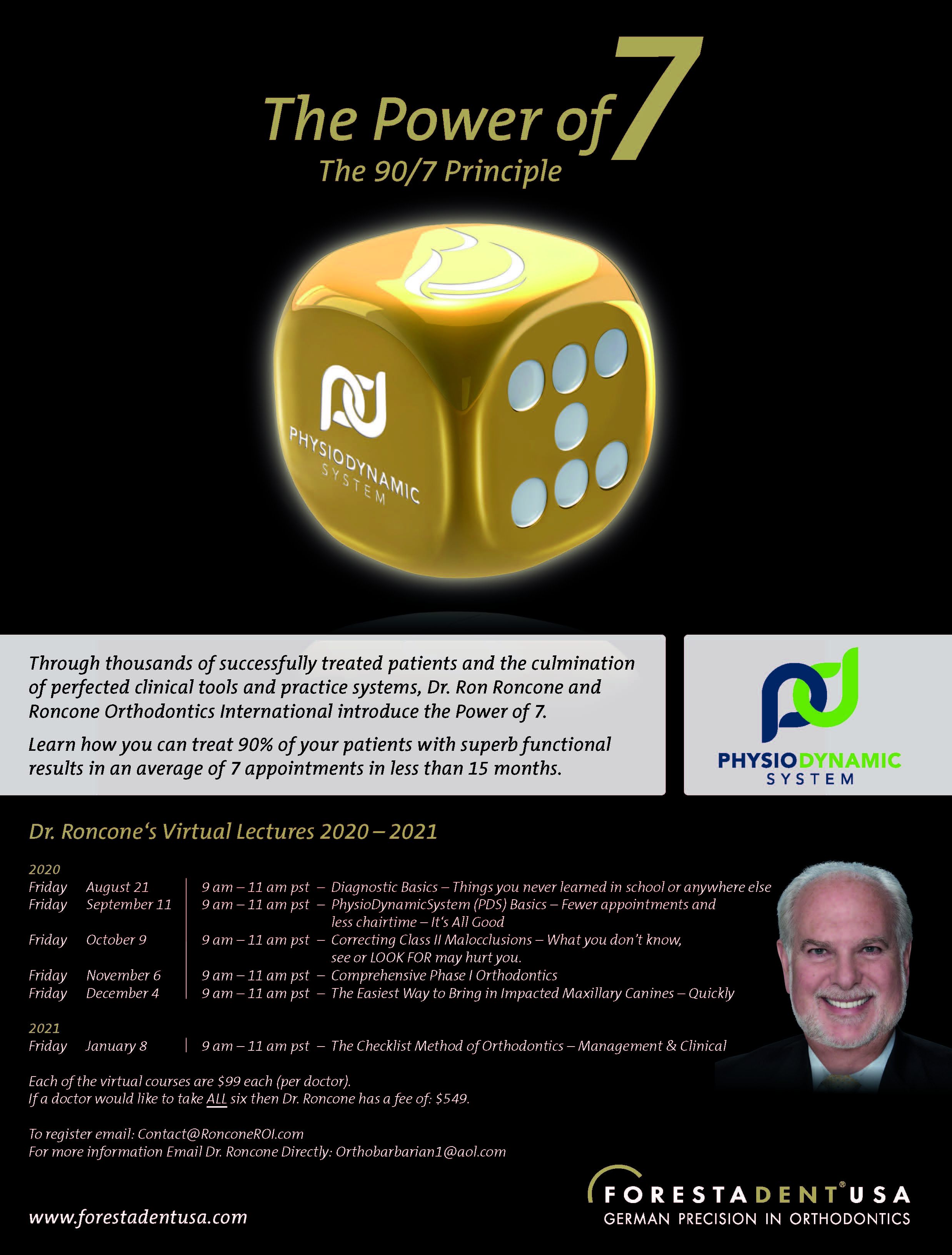The temporomandibular joint has been a focus of the orthodontic and dental literature ever since Dr. James B. Costen, an otolaryngologist, began to write about it in the 1930s. Costen certainly did not “discover” TMD—it was well known to ancient Egyptian physicians—but he was the first modern clinician to write about it extensively, so much that it was long known as “Costen’s syndrome.” As an ENT physician, Costen placed an emphasis on ear symptoms associated with TMD, including tinnitus, otalgia, impaired hearing, and even dizziness, but he was also the first to suggest that malocclusion was the primary causative factor in the development of TMD. This was the etiological theory that put management of the disorder firmly in the hands of dentistry in general and orthodontics in particular. Costen felt that the most egregious form of malocclusion tied to TMD was overclosure. Logically, then, treatment of TMD must involve such methods as occlusal build-ups, capping of the posterior teeth, or orthodontic bite-opening mechanics.
Before performing any irreversible procedures, most practitioners find it advisable to open the bite temporarily with an occlusal splint. According to the American College of Prosthodontists (www.prosthodontics.org), “An occlusal splint or orthotic device is a specially designed mouth guard for people who grind their teeth, have a history of pain and dysfunction associated with their bite or temporomandibular joints, or have completed a full mouth reconstruction.”
Similar articles from the archive:
- THE EDITOR'S CORNER The Digital Revolution January 2018
- THE EDITOR'S CORNER Diagnostic Tools for the Modern Clinician November 2015
- THE EDITOR'S CORNER High-Tech Orthodontics May 2011
It is quite common in orthodontics, prosthodontics, and restorative dentistry to utilize an occlusal splint in the early phases of an extensive treatment plan that will involve completely changing the patient’s occlusion. The rationale is that the splint will allow the patient’s oral musculature to “deprogram” from acquired muscle engrams and adaptive mandibular positions, thus freeing up the TMJ to settle into a more physiological position. While there are multiple types of splints in use today—stabilization splints, biteplane splints, anterior repositioning splints, and more—they are all fabricated similarly. First, accurate impressions are taken of the upper and lower dentitions, and a bite registration is made. A facebow transfer is then used to mount the casts on any of a variety of articulators. The splint is produced from either cold-cure or heat-processed acrylic. Following these laboratory procedures, the splint is delivered to the patient and adjusted as necessary by the doctor.
Digital intraoral scanners and virtual models are now replacing traditional impressions, stone or plaster casts, and mechanical articulators. In this issue of JCO, Dr. Jae Park and associates present an almost entirely digital workflow in which they superimpose a digital scan on a cone-beam computed tomography image and use a virtual articulator function to produce a stereolithographic file for fabrication of an occlusal splint. Also in this issue, Dr. Giovanni Battista and colleagues from Italy introduce a fully digital workflow for fabricating a three-dimensionally printed rapid palatal expander without the need for physical models.
When I first read these manuscripts, I could not help but ponder how different things are now from back in the “good ol’ days.” All of us have dealt with patients gagging from impression trays full of setting alginate and with the endless frustrations of obtaining reproducible bite registrations. Many of my colleagues gave up on facebow transfers shortly after graduation, even if they might have been diagnostically useful. By going to a digital workflow, we can now retire all those tedious old methods. I think most of our readers would agree with me that nostalgia is a good thing, but progress is better.
RGK



COMMENTS
.